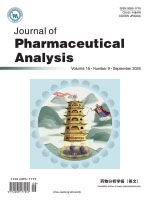2020 Vol. 10, No. 3
Display Method:
2020, 10(3): 前插1-前插2.
Abstract:
2020, 10(3): 201-208.
Abstract:
2020, 10(3): 209-220.
Abstract:
2020, 10(3): 221-232.
Abstract:
2020, 10(3): 233-239.
Abstract:
2020, 10(3): 240-246.
Abstract:
2020, 10(3): 247-252.
Abstract:
2020, 10(3): 253-262.
Abstract:
2020, 10(3): 263-270.
Abstract:
2020, 10(3): 271-276.
Abstract:



